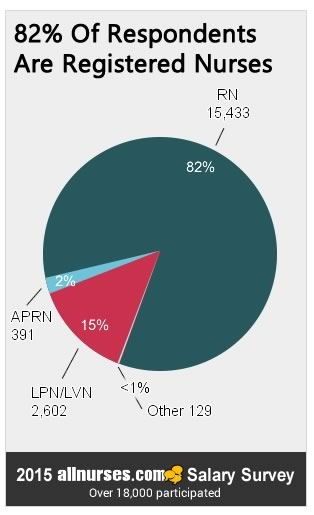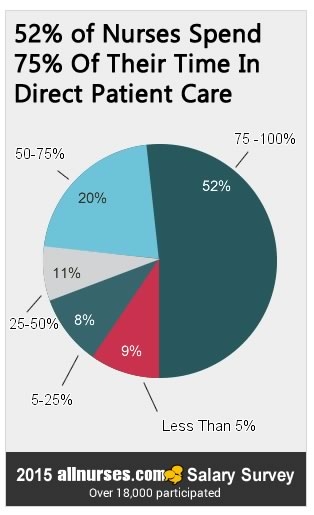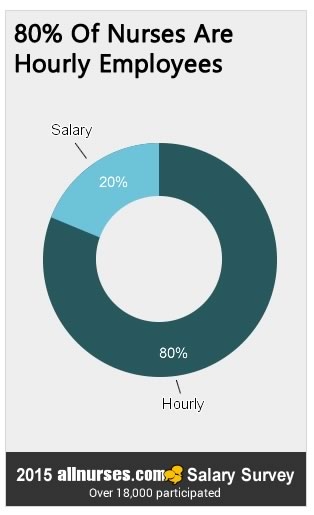The Survey
In January 2015, allnurses.com invited members and readers holding an active nursing license via the allnurses site as well as newsletters, emails and facebook to participate in a 10-minute online survey about nursing salaries. Respondents were asked 20 questions to characterize their educational background (degree, license), main roles as nurses, employer type, experience level, geographic location, etc....... After just 2 weeks from January 22 through February 3, more than 18,800 responses were received.
After reviewing the results, feel free to post your questions and comments. We can all learn from each other's input.
Respondent Profile
As shown in Figure 1, the majority of the respondents have a Bachelor's or Associate's Degree in Nursing(39.23% and 38.89% respectively), followed by Diploma (14.81%), Master's Degree in Nursing (6.38%), PhD (0.29%), Doctor of Nursing Practice(0.29%), and Doctor of Nursing Science(0.10%). With the difference in the number of BSN (6,891) and Associate (6,831) respondents so slim, it will be interesting to see what effect the mandates of some health systems requiring BSN or higher will have on these numbers in future surveys. To see what allnurses readers are already saying about this, go to BSN and Associate Nurses are Neck and Neck. Will this change?
FIGURE 1

Figure 2 shows that the majority of respondents were overwhelmingly RNs (82.39%). A couple of questions this brings to mind: are fewer nurses beginning their career as LPNs/LVNs (14.84%), and will the number of APRNs (2.09%) increase fast enough to help meet the needs of a rapidly growing population in need of more autonomous healthcare providers.
FIGURE 2

When asked, "Are you a manager or supervisor?" 17.58% (3,316) responded YES, while 82.42% (15,542) answered NO.
In response to the question, "What percentage of time is spent in direct patient care?", half of the respondents(51.85%) spend 75-100% of their time in direct patient care while 8.79% spend less than 5% in direct patient care. (Figure 3)
FIGURE 3

It's not any surprise that the survey revealed that 92.26% of respondents are female and 7.74% are male.
FIGURE 4

FIGURE 5

Experience: Figure 6 show that 62% of the respondents have 10 years or less experience.
FIGURE 6

Additional demographic of our respondents:
- 82% work full-time; 11% part time; 7% other
- 55% work at a Not-for-Profit facility
- Facility Size: 25.47% less than 100; 21.45% = 100-300; 15.93% = 300-800; 11.94% = 800 - 1500; 11.54% = 1500 - 3000; 13.67% = more than 3000
- Population Setting: 45.38% Urban; 32.15% Suburban; 22.47% Rural
- 56% of nurses work in a hospital. To see the other places that top the list, read Where Do Most Nurses Work?
FIGURE 7

FIGURE 8

FIGURE 9 - Total Number of Respondents by Primary Specialty
Compensation
The interactive charts below will allow you to customize your view to include various filters that will affect the range of figures shown. You can do this by selecting items in the drop down menus at the top of the charts. Be sure to hover your cursor over the chart for more details.
These salary figures do account for cost of living indexes, which can greatly affect the value of salaries. Generally, the cost of living is highest on the West Coast and in the Northeast. The states in the South, Midwest, and sections of the Mountain West have the lowest cost of living. For more discussion about this, please read What States Pay the Highest and Lowest Nursing Salaries?
Although women dominate the nursing profession, do men make more money? - Read what our readers have said. Look at interactive graphs below and see what you think.
FIGURE 10 - Annual Salary Base Pay by Gender
FIGURE 11 - HourlyBase Pay by Gender
FIGURE 12
FIGURE 13
FIGURE 14
FIGURE 15 - Avg Salary by Degree/State
FIGURE 16 - Annual Salary by Degree/State
FIGURE 17 - Avg Annual Salary + Hourly Pay by Degree/State
FIGURE 18 - Annual Salary + Hourly Pay by Degree/State









SummitRN, BSN, RN
2 Articles; 1,567 Posts
Wonder why Utah has such a low compensation rate